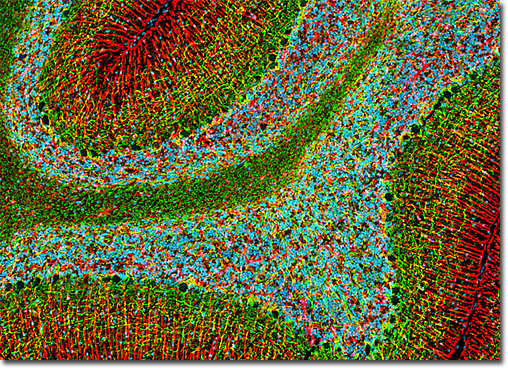Cerebellum
|
Located posterior to the brain stem and connected to it via bundled nerves is the cerebellum, the moniker of which was coined to reflect its appearance, which is similar to that of a small brain (cerebellum is the diminutive form of the Latin word for brain). The cerebellum is relatively large in humans and is divided into two lateral hemispheres, similar to the cerebrum. An outer cortex of gray matter and an inner region of white matter comprise the hemispheres, each of which is subdivided into three lobes. Different types of input are received by each of the lobes: the flocculonodular lobe collects information from the inner ear vestibule (a balance, rather than auditory, component), the anterior lobe receives impulses from the spinal cord, and the posterior lobe communicates with the cerebrum. All of the input received by the various lobes is integrated in the cortex of the cerebellum. The coordinated activity of the multiple parts of the cerebellum enables this region of the brain to control refined, coordinated muscle movements and balance. View a larger version of this image. |
© 1995-2022 by Michael W. Davidson and The Florida State University. All Rights Reserved. No images, graphics, software, scripts, or applets may be reproduced or used in any manner without permission from the copyright holders. Use of this website means you agree to all of the Legal Terms and Conditions set forth by the owners.
This website is maintained by our
|
